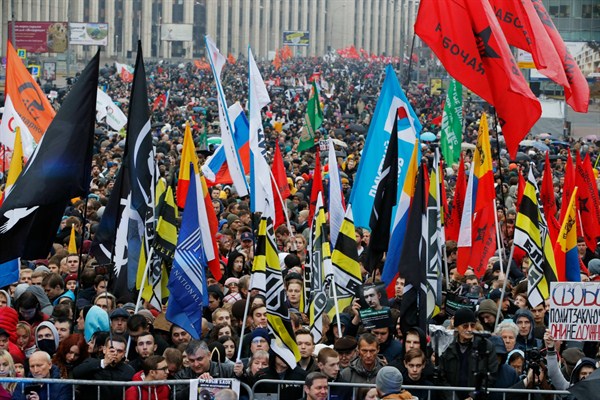Despite the much-lamented global democratic recession, recent protests in Hong Kong, Russia and elsewhere testify to the innate human desire for freedom and dignity. The question of when and how to support such movements can create excruciating dilemmas for external actors, state and nonstate alike. In a provocative new report, “Preventing Mass Atrocities: From a Responsibility to Protect (RtoP) to a Right to Assist (RtoA) Campaigns of Civil Resistance,” Peter Ackerman and Hardy Merriman of the Washington-based International Center on Non-Violent Conflict, or ICNC, set out the dos and don’ts for those who would assist local struggles against authoritarian rule. The centerpiece of their argument is a proposed new international norm, the Right to Assist, or RtoA, which would legitimate outside aid for nonviolent civil resistance movements that are committed to democratic goals. There is much to commend in the document, but it leaves several important questions unanswered.
The premise of RtoA is that nonviolent civil resistance is a far more effective strategy for toppling dictators than insurgency and civil war. This may seem counterintuitive. After all, if there is one thing strongmen are supposed to understand, it is force. The empirical evidence, however, is clear. In their award-winning 2011 study, “Why Civil Resistance Works: The Strategic Logic of Non-Violent Conflict,” political scientists Erica Chenoweth and Maria Stephan examined 323 violent and nonviolent campaigns seeking maximalist objectives, including self-determination, a change of government and the expulsion of foreign occupiers. The results, even after accounting for the variable difficulty facing different campaigns, were striking: Nonviolent civil resistance movements are more than twice as likely—53 percent to 26 percent—to achieve political transitions. They also take less time to achieve that transition—3 years versus 9 years, on average—and are vastly more likely—57 percent to 6 percent—to yield durable democratic gains.
In their report, Ackerman and Merriman bill RtoA as a logical extension of and improvement upon the “Responsibility to Protect,” or RtoP, which, among other things, legitimates armed international intervention for humanitarian protection purposes when a U.N. member state either commits atrocities against its citizens or fails to protect them from those crimes, in violation of its sovereign obligations. Although RtoP won unanimous approval at the U.N. World Summit in 2005, it is now on life support given the disastrous aftermath of the 2011 NATO-led intervention in Libya, where it was invoked, and amid the ongoing slaughter in Syria, where it wasn’t. Many U.N. member states seem to have buyer’s remorse, convinced that protecting civilians has been twisted into a license for regime change.

